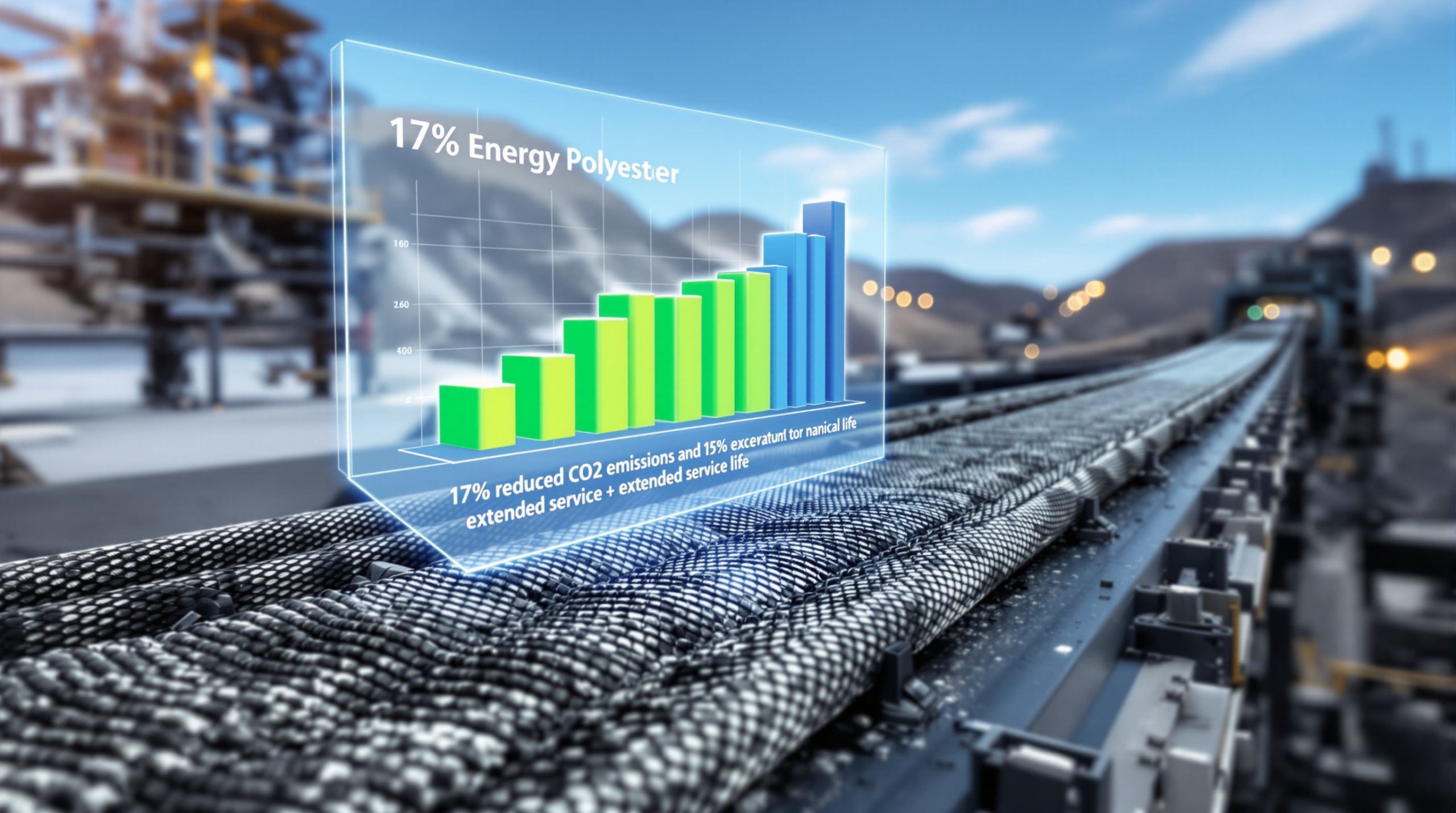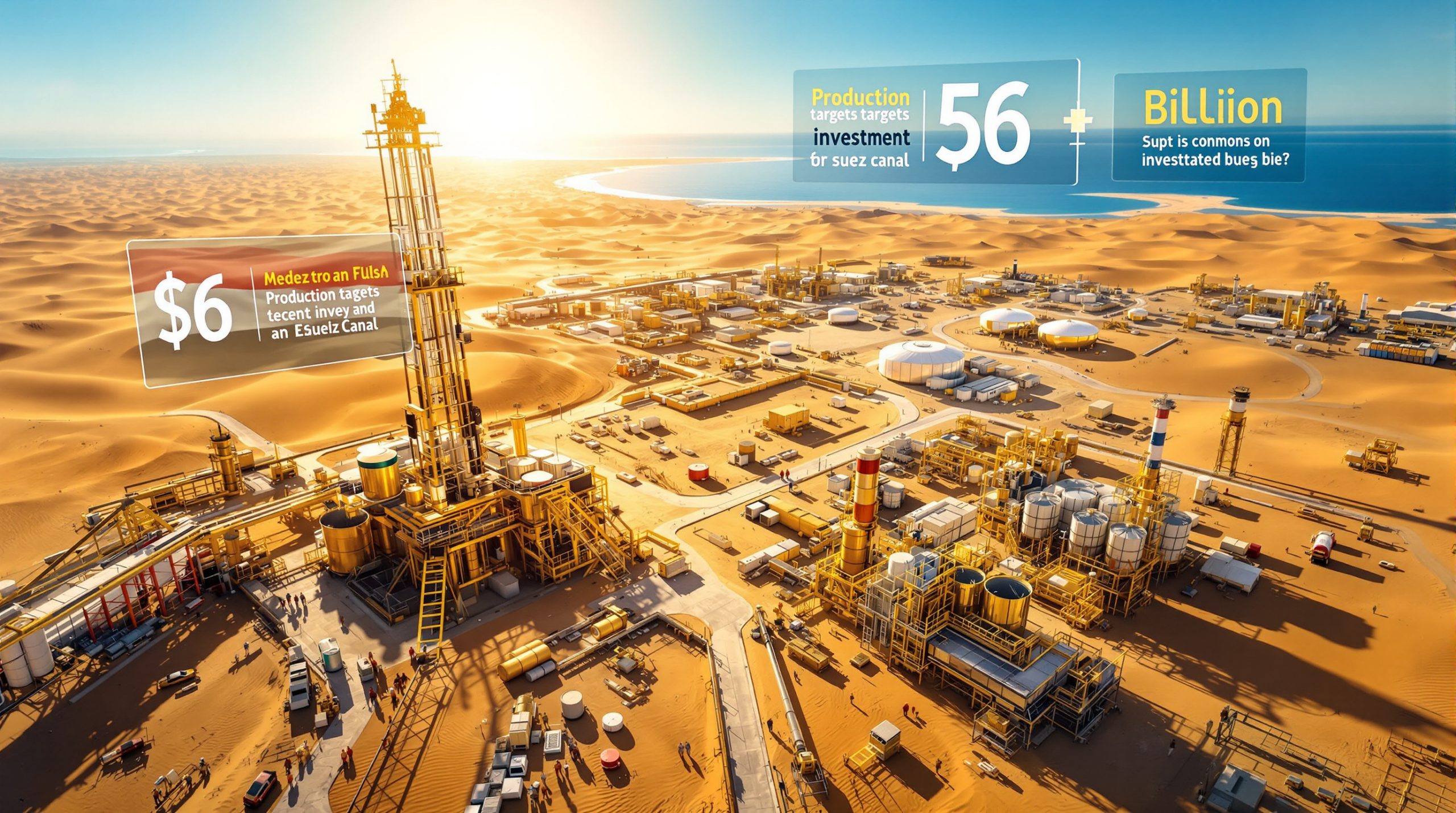Vale's Copper Ambitions: Building a Robust Project Pipeline for Future Growth
Vale SA, a global mining titan, is charting a strategic path in the copper market that prioritizes organic growth through its internal project pipeline rather than pursuing costly acquisitions. This approach represents a deliberate choice to leverage the company's existing assets and regional expertise to meet the growing global demand for copper.
Vale's Current Copper Position and Growth Targets
Vale currently produces approximately 350,000 tonnes of copper annually, positioning it as a significant but not dominant player in the global copper market. The company has established ambitious growth targets, aiming to double its production to 700,000 tonnes by 2035 through systematic development of its existing project pipeline.
CEO Gustavo Pimenta has candidly acknowledged that Vale "fell behind in the copper race" compared to industry peers, but the company is now making deliberate moves to strengthen its position in this strategically important metal sector.
To fuel this growth trajectory, Vale has committed substantial capital, allocating 70 billion reais (approximately $13 billion) for investments in Amazon region projects through 2030. This funding will support both copper and iron ore developments, highlighting the company's dual-commodity focus in the resource-rich region.
The investment strategy demonstrates Vale's long-term confidence in copper price insights despite near-term price volatilities. With copper playing an essential role in global electrification efforts, the company's expansion plans align with projected increases in demand driven by renewable energy infrastructure, electric vehicles, and grid modernization.
Why Vale Is Prioritizing Project Pipeline Over Acquisitions
Internal Development Advantages
Vale's strategy of focusing on internal project development rather than acquisitions reflects a calculated assessment of where the greatest value creation potential lies. CEO Pimenta has explicitly stated that the company's "opportunity lies more in developing our mining potential than in possibly making a transaction," highlighting management's confidence in Vale's existing asset base.
This approach offers several strategic advantages. By developing owned assets, Vale maintains complete operational control and can better integrate new projects with existing infrastructure. This integration creates significant synergies, particularly in the Amazon region where the company already operates major mining complexes.
The company's extensive operational experience in Brazil, particularly in the challenging Amazon environment, provides Vale with specialized expertise that may be difficult for competitors to replicate. This regional knowledge encompasses environmental management, community relations, and logistical capabilities specific to the area's unique conditions.
From a financial perspective, internal development potentially offers superior returns compared to acquisitions, which often require significant premiums in the current competitive market environment. By avoiding bidding wars for established assets, Vale can deploy capital more efficiently toward projects with higher copper exploration value.
Acquisition Market Challenges
The current market for copper assets is characterized by intense competition and premium valuations, making acquisitions potentially less attractive from a value creation standpoint. The recent merger between Anglo American and Teck Resources, valued at over $50 billion, exemplifies the substantial premiums being paid for copper-focused assets in the current market environment.
This transaction, one of the largest mining deals in over a decade, highlights both the strategic importance major miners are placing on copper and the significant capital required to acquire established production. Pimenta has acknowledged this deal as validation of "the favorable supply-demand outlook that's underpinning copper," while maintaining that Vale's greatest opportunities lie in its internal pipeline.
Beyond cost considerations, cross-border mining acquisitions face increasing regulatory scrutiny, adding complexity, uncertainty, and potential delays to transaction timelines. Integration challenges also present significant risks, as acquired operations often have different operational practices, corporate cultures, and stakeholder relationships that must be carefully managed.
Vale's Priority Copper Projects
Amazon Region Focus
Vale's copper growth driven by project pipeline centers on accelerating development of its projects in Brazil's Amazon rainforest region. The company has identified the Alemao and Bacaba projects as top priorities for advancement, leveraging their proximity to Vale's existing Carajas Complex operations.
This regional concentration creates significant operational advantages. The Carajas Complex already hosts substantial mining infrastructure, including transportation networks, power supply, and processing facilities that can potentially be leveraged for new developments. This established presence reduces the capital intensity and development timeline for new projects compared to greenfield developments in remote locations.
The Amazon region's geological potential for copper remains substantial, with many areas still underexplored despite known mineral wealth. The area hosts world-class deposits with attractive grades and metallurgical characteristics that support competitive production costs once operational.
Capital Allocation Strategy
Vale recently revised its 2025 capital expenditure guidance downward to $5.4-5.7 billion from a previous estimate of $5.9 billion. However, Pimenta emphasized that these adjustments stem from efficiency gains rather than project cancellations, stating that Vale is "not giving up on any projects."
The spending adjustments are specifically concentrated in the copper and nickel business segments, reflecting the company's ongoing optimization efforts rather than a strategic shift away from these metals. This approach demonstrates Vale's commitment to disciplined capital allocation while maintaining development momentum for strategic growth projects.
The company's overall investment approach balances near-term capital discipline with long-term growth aspirations, ensuring that critical copper developments continue advancing while maintaining financial flexibility. This balanced approach protects shareholder returns while positioning Vale for future copper market opportunities.
The Global Copper Market Context Influencing Vale's Strategy
Industry Consolidation Trends
The mining industry is experiencing a wave of consolidation driven largely by the strategic importance of copper. The Anglo American-Teck Resources merger, valued at over $50 billion, represents one of the most significant mining transactions in recent history and will create the world's fifth-largest copper producer pending regulatory approvals.
This transaction reflects the premium valuations copper assets currently command, with major miners willing to pay substantial amounts to secure production and development opportunities. CEO Pimenta has cited this combination as validation of copper's favorable supply-demand fundamentals, reinforcing Vale's strategic focus on expanding its presence in this market.
The consolidation trend extends beyond this headline transaction, with numerous mid-tier copper producers also becoming acquisition targets. This activity has driven valuations higher across the sector, making organic growth potentially more attractive from a return-on-investment perspective compared to expensive acquisitions.
Copper Market Fundamentals
Copper's essential role in electrification and renewable energy technology creates structural demand growth that underpins Vale's expansion strategy. The metal's unmatched electrical conductivity properties make it irreplaceable in many applications central to the energy transition, including electric vehicle motors, charging infrastructure, renewable energy generation, and grid modernization.
Supply constraints present significant challenges for the global copper supply forecast. New discoveries have become increasingly rare, with many projects facing declining ore grades, deeper ore bodies, and more complex metallurgy. These factors increase development costs and timelines, limiting the industry's ability to rapidly expand production in response to growing demand.
The regulatory environment for new mine development has also become more challenging globally, with permitting processes becoming lengthier and more complex. Environmental and social considerations now require more extensive studies and stakeholder engagement, extending project timelines from discovery to production.
These fundamental factors—growing demand and constrained supply—create a positive long-term outlook for copper prices that supports Vale's strategic investment in expanding production capacity through its project pipeline.
Challenges in Executing Vale's Copper Growth Strategy
Operational Considerations
Developing copper projects presents significant technical and operational challenges that Vale must navigate successfully. Typical development timelines for copper mines span 7-10 years from discovery to commercial production, requiring sustained organizational focus and investment through multiple market cycles and potential leadership changes.
Underground mining operations, which characterize many copper developments, present greater engineering complexity compared to open-pit operations. These projects require specialized expertise in geotechnical engineering, ventilation system design, and mine planning to ensure safe and efficient extraction.
Operating in the Amazon region introduces additional complexities related to environmental management. The area's high rainfall, sensitive ecosystems, and biodiversity require sophisticated water management systems, careful waste storage design, and comprehensive environmental monitoring programs to ensure operations meet regulatory requirements and sustainability commitments.
Infrastructure development represents another critical consideration. Despite Vale's established presence in the region, new projects often require significant additional investment in transportation networks, power supply, and water management infrastructure. These supporting developments can comprise a substantial portion of overall project costs and introduce additional execution risks.
External Risk Factors
Brazil's regulatory environment presents both opportunities and challenges for Vale's copper development strategy. While the country has a well-established mining code and regulatory framework, policies can shift with changing administrations, creating potential uncertainty for long-term investment planning.
Environmental scrutiny of mining operations in the Amazon region has intensified in recent years, with greater focus on forest conservation, water protection, and biodiversity preservation. These considerations require Vale to implement industry-leading environmental management practices and maintain transparent engagement with regulatory authorities.
Community relations represent a critical success factor for mining operations globally, with particular importance in regions with indigenous populations and traditional communities. Effective stakeholder engagement requires sustained investment in community development initiatives, transparent communication, and meaningful participation of local populations in decision-making processes.
Market volatility presents financial risks to Vale's development strategy. Copper prices have historically demonstrated significant cyclicality, with periods of both substantial appreciation and decline. These fluctuations can impact project economics and investment timing decisions, requiring flexible development approaches that can adapt to changing market conditions.
Vale's Approach Compared to Industry Alternatives
Organic vs. Inorganic Growth Strategies
Vale's emphasis on internal project development represents a distinctive approach compared to some industry peers who are pursuing aggressive acquisition strategies. This organic growth focus contrasts particularly with Anglo American's transformative acquisition of Teck Resources, which instantly expands Anglo's copper production capacity.
Other major miners are pursuing balanced approaches that combine both organic development and strategic acquisitions to grow their copper exposure. This diversified strategy aims to accelerate production growth while also building longer-term project pipelines, though it typically requires greater capital deployment and carries higher integration risks.
Some companies have adopted partnership models to share development risks and capital requirements, particularly for large-scale projects. Joint ventures and strategic alliances can accelerate development timelines by combining complementary capabilities and resources, though they introduce additional complexity in governance and decision-making processes.
Vale's organic growth approach potentially offers advantages in terms of capital efficiency and risk management, though it may deliver more gradual production increases compared to transformative acquisitions. This measured growth trajectory allows for sequential development of projects, enabling learning and optimization from each successive development.
Regional Development Patterns
Vale's focus on Brazilian assets represents a regionally concentrated approach compared to many peers who are pursuing geographic diversification of copper holdings. This concentration creates operational synergies but also increases exposure to country-specific risks related to political, regulatory, and economic factors.
Major miners increasingly seek geographic diversification of copper assets to mitigate country risks and access diverse geological opportunities. This approach spreads political and operational risks across multiple jurisdictions but requires building specialized knowledge and stakeholder relationships in each operating region.
Industry interest in frontier copper regions has increased as traditional mining jurisdictions become more mature and competitive. Less-developed copper regions may offer discovery potential and less competition for assets, though they typically present greater infrastructure challenges and potentially higher operating risks.
Brownfield expansion of existing operations represents another industry focus, with companies investing to extend mine lives, increase processing capacity, or develop satellite deposits near established infrastructure. These investments typically offer lower risk profiles and shorter development timelines compared to greenfield projects.
Implications for the Global Copper Supply Outlook
Production Growth Trajectory
Vale's target of doubling copper production to 700,000 tonnes by 2035 represents meaningful but not transformative industry growth in the context of a global market approaching 30 million tonnes annually. While significant for Vale's portfolio diversification and growth, this expansion represents one component of the industry's broader response to projected demand increases.
New copper projects are coming online gradually over the next decade, with few major developments reaching production before 2026-2027 due to typical development timelines. This measured supply response creates potential for market tightness during periods of accelerating demand growth, particularly as electrification initiatives expand globally.
Brazil's contribution to global copper supply may increase meaningfully through Vale's development program, though the country will remain a secondary producer compared to major copper nations like Chile, Peru, and the Democratic Republic of Congo. Nevertheless, diversification of global supply sources strengthens overall market resilience.
Major producers are consolidating control of copper supply through both development and acquisition strategies, potentially increasing industry concentration. This consolidation may influence market dynamics and pricing power, though new entrants and expansion by mid-tier producers provide competitive counterbalance.
Market Balance Considerations
Copper requirements for energy transition applications are growing rapidly, with electric vehicles, renewable energy infrastructure, and grid modernization driving substantial demand increases. Each electric vehicle requires approximately 2-4 times more copper than conventional vehicles, while renewable energy generation uses significantly more copper per megawatt than traditional power sources.
Limited major new projects entering production in the near term constrain supply growth potential, with many development-stage projects still several years from commercial production. This development pipeline gap creates potential for sustained market tightness in the mid-2020s before new production capacity comes online.
The structural supply-demand imbalance supports a strong price outlook that underpins Vale's investment case for copper expansion. While cyclical factors may create periodic volatility, the fundamental demand growth trajectory appears robust based on committed decarbonization initiatives globally.
Copper assets increasingly hold strategic importance beyond pure financial returns, with major economies and companies seeking to secure supply chains for critical minerals essential to energy transition technologies. This strategic dimension adds another layer of competition for quality copper resources beyond traditional economic considerations.
How Investors Can Interpret Vale's Copper Strategy
Investment Considerations
Vale has established clear production growth targets for copper through 2035, providing investors with transparent expectations for the company's expansion trajectory. This clarity enables more informed valuation assessments compared to companies with less defined growth pathways.
The company's recent capital expenditure guidance revision demonstrates a focus on efficiency and disciplined spending, potentially supporting stronger free cash flow generation while maintaining development momentum. This balanced approach may appeal to investors seeking both growth exposure and current returns.
Vale's strategic positioning in copper represents a meaningful diversification from its traditional iron ore focus, potentially reducing overall portfolio volatility and creating exposure to different market fundamentals. This evolution may attract investors specifically seeking exposure to energy transition metals.
The company's risk management approach emphasizes controlled execution of owned assets rather than integration risk from major acquisitions. This strategy may offer a more predictable development pathway, though potentially with more gradual production growth compared to acquisition-led approaches.
Comparative Analysis
Vale's organic growth approach offers a different risk-reward profile than acquisition-led strategies pursued by some competitors. While potentially delivering more measured production increases, this approach may generate superior returns on invested capital by avoiding acquisition premiums and integration challenges.
The execution timeline for Vale's development pathway provides gradual rather than transformative growth, which may appeal to investors with longer time horizons who prioritize sustainable value creation over rapid expansion. This measured approach also potentially reduces execution risk compared to simultaneous development of multiple major projects.
Vale's strategy establishes a distinctive market position compared to peers, with particular focus on leveraging regional expertise and existing infrastructure advantages. This differentiated approach may provide portfolio diversification benefits for investors seeking exposure to multiple mining company strategies.
The increasing copper exposure diversifies Vale's traditional iron ore focus, potentially reducing earnings volatility as the portfolio becomes more balanced between these commodities with different fundamental drivers. This evolution represents an important factor for investor assessment of Vale's long-term value proposition.
Environmental and Social Dimensions of Vale's Copper Strategy
Sustainability Considerations
Vale's copper projects are located in Brazil's environmentally sensitive Amazon region, requiring robust management practices to mitigate ecological impacts. The rainforest's exceptional biodiversity and global importance for climate regulation create particular responsibility for implementing industry-leading environmental safeguards.
Water management represents a critical aspect of sustainable copper development, with processing operations requiring significant water resources that must be carefully managed to prevent impacts on local watersheds. Closed-loop water systems, water recycling technologies, and comprehensive monitoring programs are essential components of responsible operation.
Energy consumption for mining and processing operations carries substantial emissions implications, requiring strategic approaches to reduce carbon intensity. Vale has opportunities to leverage Brazil's relatively clean electricity grid and potentially develop renewable energy solutions to power operations, reducing the carbon footprint of copper production.
Land use impacts in forest areas require careful management to minimize the footprint of mining operations and associated infrastructure. Progressive rehabilitation practices, biodiversity offset programs, and comprehensive land management planning are essential for responsible development in the Amazon region.
Community Engagement
Vale's copper developments will create significant employment opportunities in developing regions of Brazil, potentially providing economic benefits to local communities. Beyond direct employment, these projects generate substantial indirect economic activity through local procurement and service requirements.
Operations in or near indigenous territories require particularly careful consultation and engagement processes to ensure respect for traditional rights and cultural heritage. Free, prior, and informed consent principles have become standard practice for responsible resource development affecting indigenous peoples.
Mining activities contribute to broader regional development through infrastructure improvements, skills development, and tax revenues that support public services. Strategic community investment programs can enhance these benefits by addressing priority development needs identified through stakeholder engagement.
Social investment initiatives supporting education, health, and infrastructure in operating regions represent important components of Vale's social license to operate. These programs require long-term commitment and community participation in design and implementation to ensure they deliver sustainable benefits aligned with local priorities.
The Future of Vale's Copper Business
Long-term Strategic Vision
Copper is assuming greater strategic importance within Vale's diversified mining portfolio, reflecting both market trends and internal portfolio optimization. While iron ore remains the company's core business, copper's growing contribution will create a more balanced production mix over time.
The established pathway to double copper production by 2035 provides clear direction for business development, with sequential project advancement creating a visible growth trajectory. This systematic approach enables effective resource allocation and organizational focus on execution priorities.
Vale's Brazilian land holdings contain significant exploration upside for copper, with potential for additional discoveries to extend the growth pipeline beyond currently identified projects. Ongoing exploration investment will be crucial for maintaining development momentum beyond the current decade.
Vertical integration opportunities may provide additional value capture potential as Vale's copper business grows. Processing capacity development could enable production of higher-value copper products rather than concentrates, potentially improving margins and reducing transportation costs for final products.
Adaptability Factors
Vale's development approach incorporates market responsiveness, with the ability to accelerate or defer projects based on prevailing conditions. This flexibility enables capital deployment optimization while maintaining long-term growth objectives, particularly important given copper's price cyclicality.
Technological innovation adoption represents a significant opportunity to improve both efficiency and sustainability of copper operations. Advanced automation, predictive maintenance, and digital twins for processing plants can enhance productivity while reducing operating costs and environmental footprints.
Partnership potential remains available as a strategic option, with Vale potentially benefiting from selective collaborations that bring complementary capabilities or capital to accelerate specific developments. These partnerships could enable faster advancement of the project pipeline while sharing development risks.
Financial flexibility supported by Vale's strong balance sheet enables sustained investment through market cycles, an important advantage for long-term development programs. This financial strength allows the company to maintain development momentum during potential market downturns when others might defer investments.
FAQ: Vale's Copper Growth Strategy
Why is Vale focusing on internal projects rather than acquisitions?
Vale sees greater value creation potential in developing its existing project pipeline rather than pursuing acquisitions in today's premium-priced market. CEO Gustavo Pimenta has explicitly stated that the company's "opportunity lies more in developing our mining potential than in possibly making a transaction," highlighting management's confidence in Vale's internal growth prospects.
Where are Vale's key copper projects located?
Vale's priority copper projects, including Alemao and Bacaba, are located in Brazil's Amazon rainforest region, near the company's existing Carajas Complex operations. This regional concentration creates operational synergies with established infrastructure and leverages Vale's extensive experience operating in the Amazon environment.
How much is Vale investing in copper development?
Vale has committed 70 billion reais (approximately $13 billion) for Amazon investments covering both iron ore and copper projects through 2030. This substantial capital commitment demonstrates the company's long-term confidence in copper market fundamentals despite near-term price volatilities.
How does Vale's approach differ from other major miners?
While competitors like Anglo American are pursuing major acquisitions (such as the $50+ billion Teck Resources deal), Vale is prioritizing organic growth through its existing project pipeline. This strategy emphasizes operational control, regional expertise, and potentially superior returns compared to premium-priced acquisitions in today's competitive market.
What are Vale's copper production targets?
Vale currently produces about 350,000 tonnes of copper annually and aims to double this to 700,000 tonnes by 2035 through systematic development of its project pipeline. This growth trajectory represents a significant but measured expansion over the next decade.
Has Vale changed its capital expenditure plans?
Yes, Vale recently reduced its 2025 capital expenditure guidance to $5.4-5.7 billion from a previous estimate of $5.9 billion. However, CEO Pimenta emphasized that these adjustments stem from efficiency gains rather than project cancellations, with the company maintaining its commitment to all planned developments.
Further Exploration
Readers interested in learning more about global copper market trends and copper investment strategies can explore related educational content covering developments in the copper mining sector. For regular updates on the evolving energy transition mineral landscape, industry publications provide ongoing coverage of technological developments, surging copper demand, and company strategies shaping the future of copper supply.
Want to Identify the Next Major Mineral Discovery Before the Market?
Discovery Alert's proprietary Discovery IQ model instantly alerts investors to significant ASX mineral discoveries, transforming complex geological data into actionable investment opportunities. Explore why historic discoveries have generated substantial returns by visiting our dedicated discoveries page and begin your 30-day free trial today.




